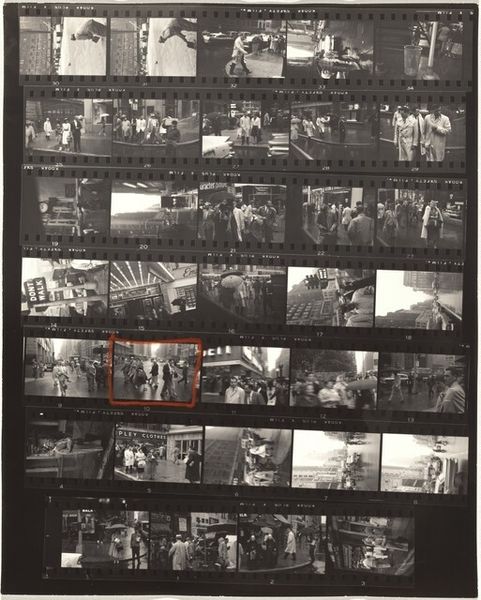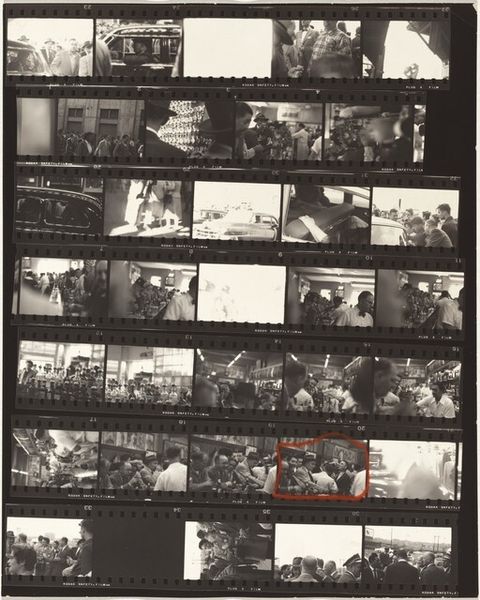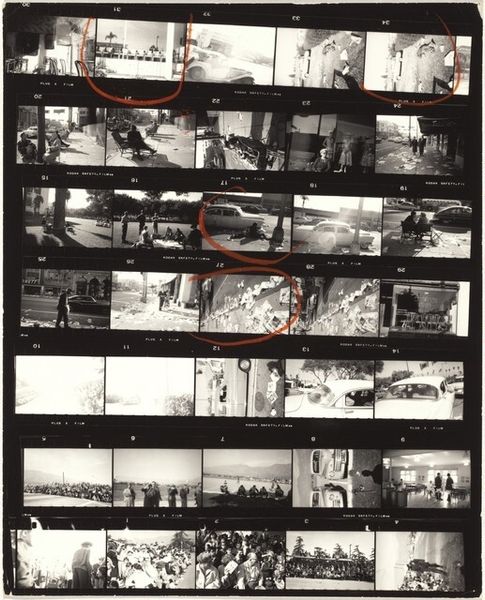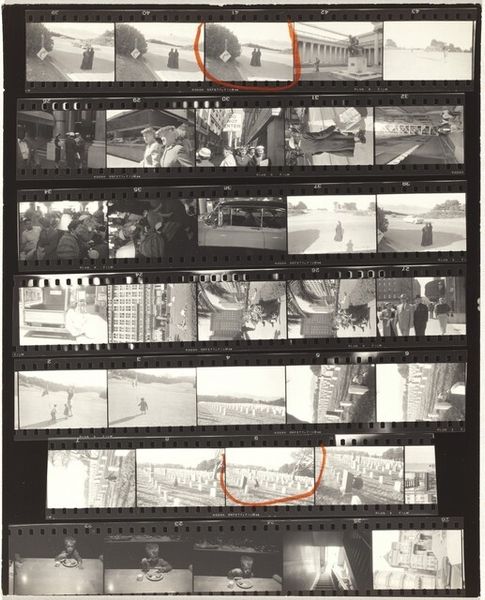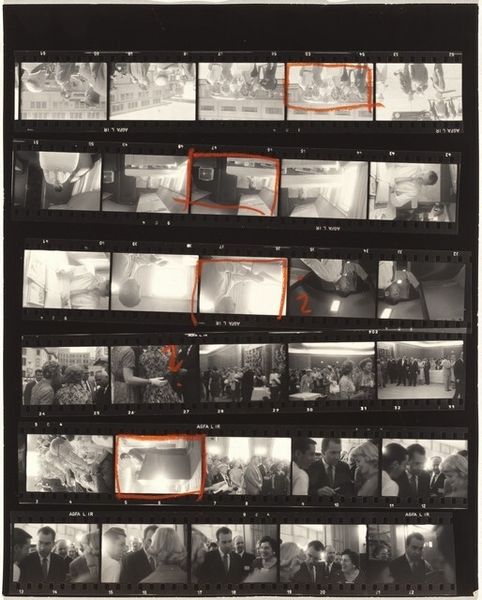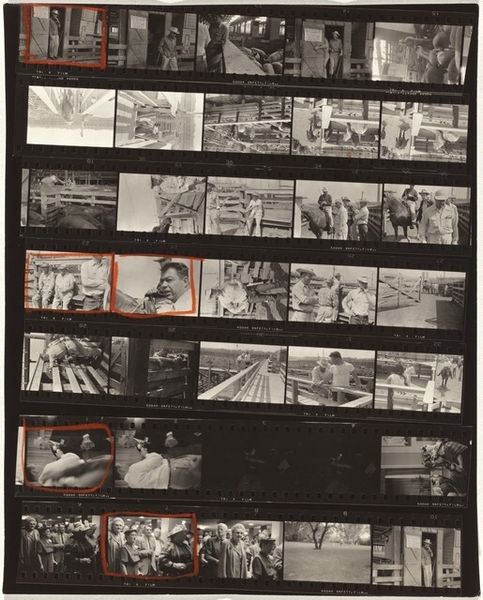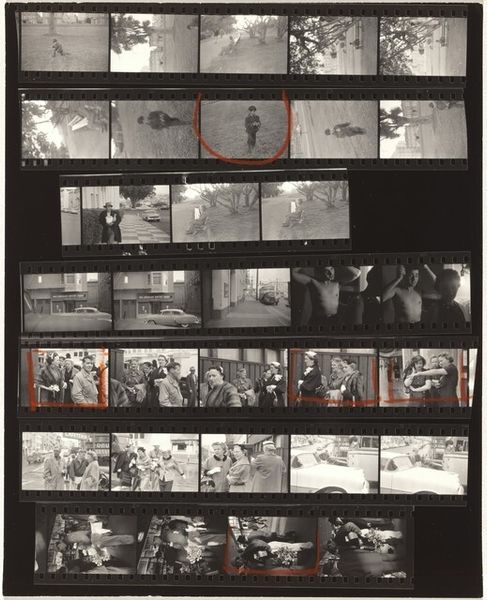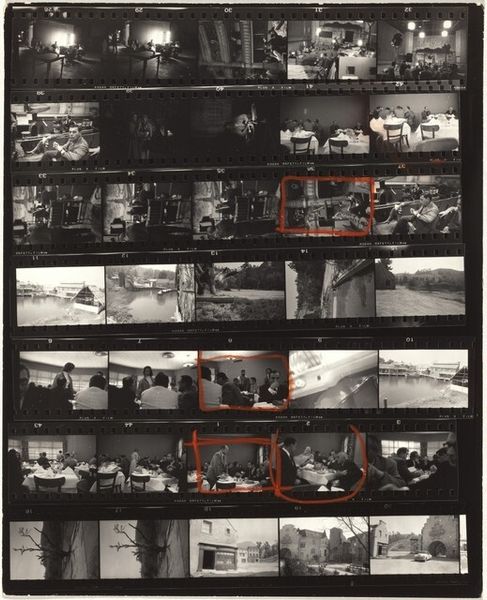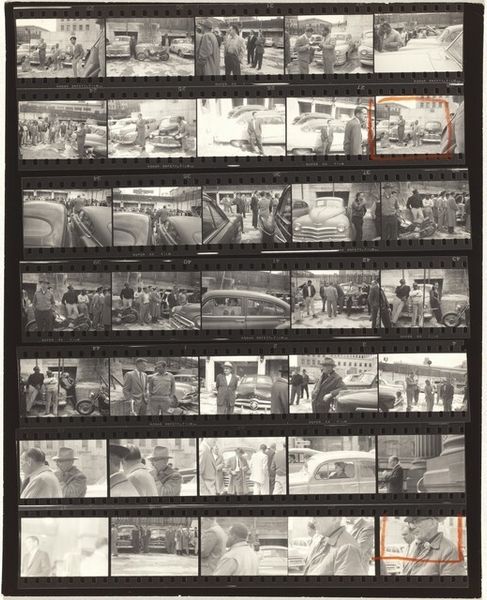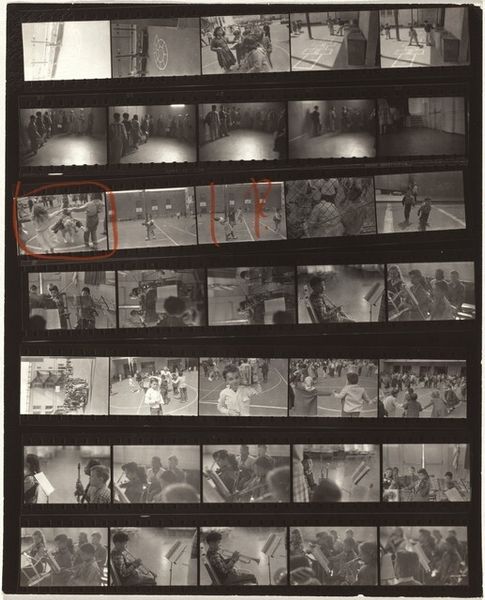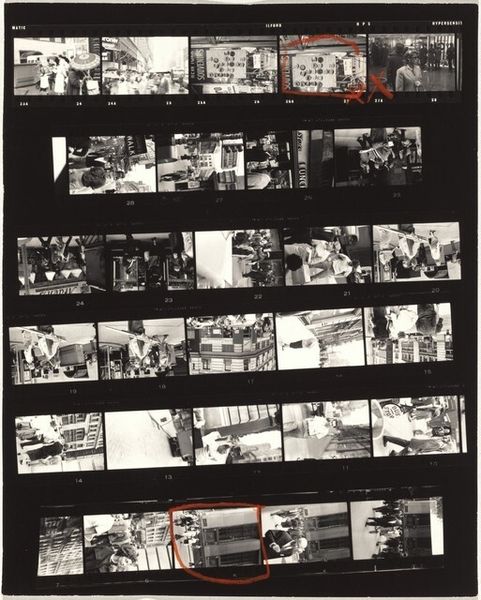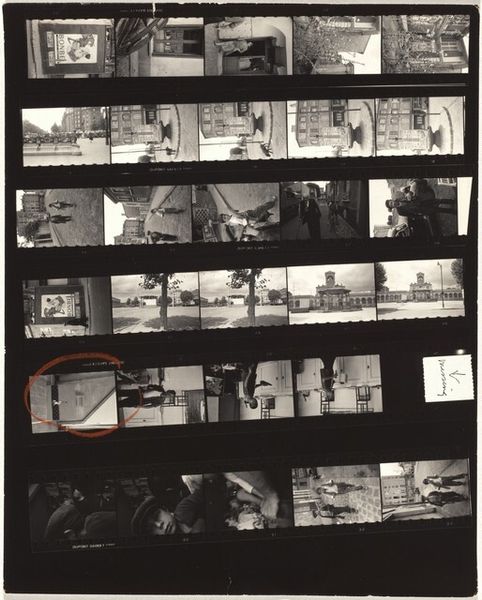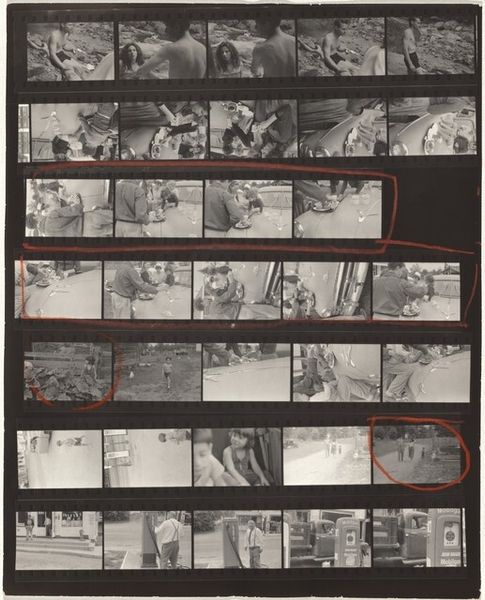
photography, gelatin-silver-print
#
print photography
#
landscape
#
street-photography
#
photography
#
gelatin-silver-print
#
pop-art
#
modernism
#
monochrome
Dimensions: overall: 25.2 x 20.2 cm (9 15/16 x 7 15/16 in.)
Copyright: National Gallery of Art: CC0 1.0
Editor: Here we have Robert Frank’s "Guggenheim 755--Jay, New York," a gelatin silver print from 1956. It's essentially a contact sheet, showing rows of images from a film roll. There's a sort of ordered chaos to it, you know? Like snapshots of small-town Americana, but fragmented. What draws your eye, looking at this collection of images? Curator: I find the structure immediately compelling. The grid imposed by the contact sheet provides a framework. Note how Frank isn't presenting a singular, definitive image, but a series of variations on a theme. The juxtaposition becomes the primary subject. Consider the stark blacks of the film borders against the grayscale images. Editor: So, the *way* it’s presented is as important as the images themselves? Curator: Precisely. We can discuss the content – the implied narrative of small-town life, the presence of the American flag as a recurring motif – but ultimately, the power lies in Frank’s manipulation of form. The repetition creates rhythm; the selected frames, emphasized with red outlines, interrupt it. What principle guided those selections? How do they disrupt or enhance the narrative flow? Editor: It's like he's guiding our gaze. I was so focused on figuring out what each individual image *meant,* I almost missed the overall structure. Curator: Consider, then, how the medium itself communicates. The visible grain, the imperfections...these become active elements in the construction of meaning. The raw aesthetic pushes back against a polished, idealized version of America. Editor: I see now. Focusing on just what is being represented would be a disservice to the photograph. Thank you, I see much more than what meets the eye now. Curator: It reveals itself further upon each look, an ongoing dialectic between artist, object, and viewer.
Comments
No comments
Be the first to comment and join the conversation on the ultimate creative platform.

